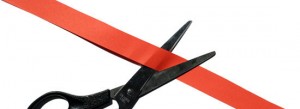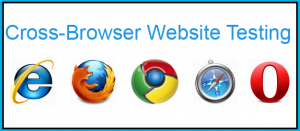
Now it’s time to cut the ribbon on your shiny new web site.
Hi guys. Carlton Stith here! Welcome to the final installment in my how to design a web site series where I will discuss the website launch phase. If you haven’t done so already, click here to read some of previous posts where I discuss the beginning stages of my design process. I recommend to start reading from the first post and continuing up to this post.
So far I have covered the planning, design and development stages of my design and development process. At this stage we should be ready for lift-off. Once the client is happy we are finally ready to launch the web site. This is an exciting time both for myself and the client. This is when all of the hard work pays off. But I can’t put my feet up and relax just yet because there are a few more things that need to be done to make sure the launch of the site is a successful one.
Prepare for liftoff!

The launch date can be an exciting day for both you and the client.
Photo courtesy of Jose Avero
Last call! At this time, all of the last minute finishing touches are put in place. I am checking for compatibility issues and making sure the site images are properly optimized. CSS Sprite sheets are really quite simple to make and can limit the number of HTTP-Requests that have to be made by the browser. This ultimately leads to faster site downloads and possible improved SEO. Various tools such as Codekit for Mac and Prepos for Windows can take care of most of my file concatenation and image optimization requests. BTW, these also work very well with LESS, SASS, Compass, etc. files very well.
Migrating from the local server to a web host
I would have been most likely developing the site locally, so at this point I am transferring the site from my local server (I use XAMPP by Apache Friends) to a live server such as Bluehost (my favorite), HostGator or whichever web host the client may choose. You (the client) should have already researched the web hosts that I have recommended or have chosen one from the countless other web hosting companies and given to me any log-in credentials. Once again, I use and recommend Bluehost to all of my clients.
I will do some last minute testing to make sure everything is running smooth on the site. I may use the W3C Markup Validation Service on the projects but I take the results with a grain of salt. Don’t get me wrong…this is a great tool but I’ve found that a lot of the errors that this tool gives are false (especially for WordPress) and I have found that these do not affect the overall functionality of the site.

All of the research that was performed earlier in the project is used to optimize the web site for Google, Yahoo and Bing.
Using the compiled data from the web site keyword research, I will then use this provided data to employ any appropriate keywords to make the site search engine friendly. For monitoring purposes, I will create a Google Analytics account for the client. These keywords are compiled and placed within the site Meta Tags for SEO purposes. Google Analytics is huge and should be supervised weekly at the very least. A sitemap is also created and submitted to Google, Yahoo and Bing. And don’t forget to proofread!
Develop a strategy for web site development testing
For cross browser testing I may use one of the available tools such as BrowserStack or Browsershots. These provide a virtual browser for testing the site in every way imaginable. Both of these are excellent tools and provide me with the visuals that I need to combat any bugs or inconsistencies (sorry IE) within the site. For a more detailed description of BrowserStack, I would recommend reading this article by Rey Bango.

Testing across multiple browser (as well as various versions) is a must. Don’t forget about mobile too.
In the end, the process that is needed to create a well designed web site involves a lot of steps. I hope that you have learned something along the way. Bear in mind that I did not cover each step in great detail and each designer may follow a different process. If you have any feedback, please feel free to leave a comment below. I would love to hear your thoughts. Until next time, peace.